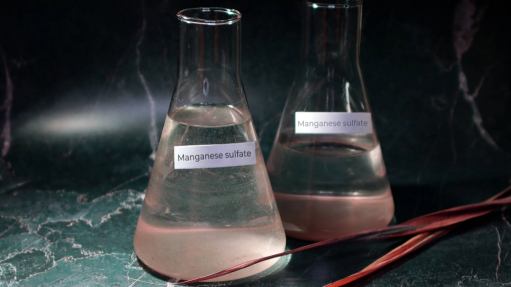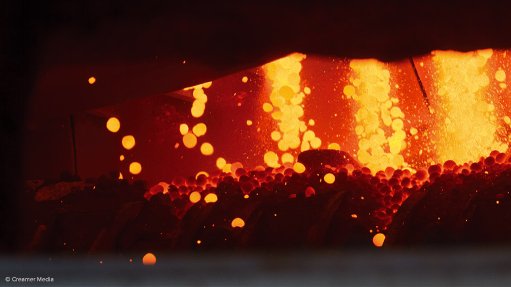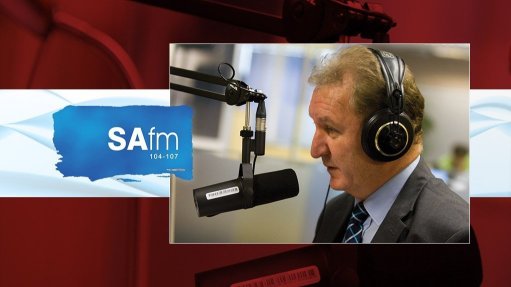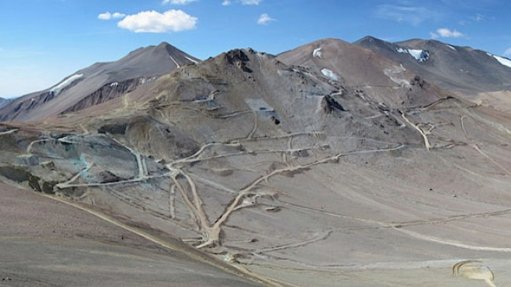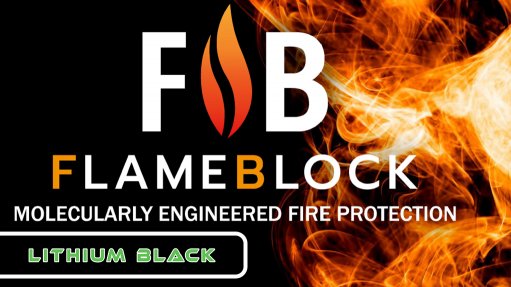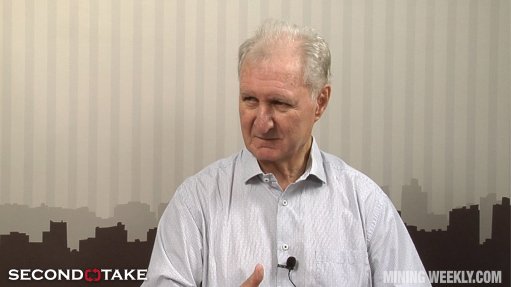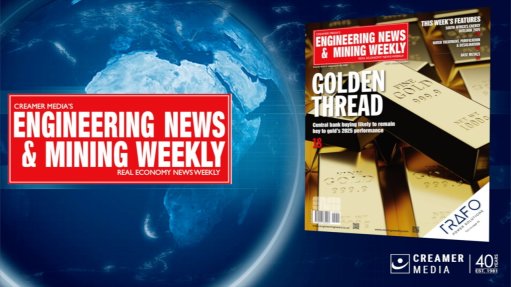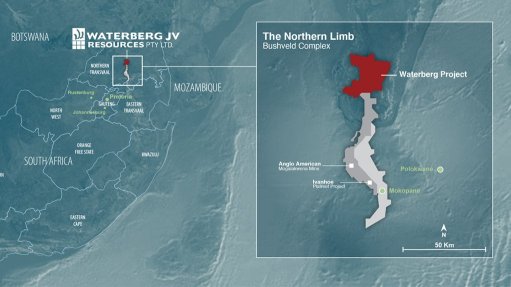Kimberlite research could help reverse emissions


ABSORBING RESEARCH Alrosa's Research has shown that kimberlite ore absorbs emissions when subject to standard mining operations which use water in the processes
Global diamond corporation Alrosa Group is working with Russia’s leading research centres to study the carbon dioxide (CO2) absorption capabilities of kimberlite to determine whether it could eventually be used to completely offset the company’s greenhouse-gas emissions.
The results from the first phase of the study, released in September 2021, confirmed that reactions between ultramafic rocks and CO2 in the atmosphere led to the absorption of CO2, and the formation of calcite and other carbonates.
Therefore, kimberlite, mined by diamond companies as an indigenous diamond ore, is also typically ultramafic rock and capable of absorbing CO2 when exposed to atmospheric air in the presence of moisture.
After kimberlite ore is extracted, it undergoes various processing stages to extract diamonds, including grinding the ore with large amounts of water.
Under these conditions, chemical changes in the composition of the kimberlite occur, and these changes are accompanied by CO2 being absorbed from the air.
Consequently, the process of mining diamonds from certain types of deposits leads to the spontaneous absorption of CO2 from the atmosphere by the processed ore.
Alrosa staff and the scientists suggest that the discovery of kimberlite ore’s ability to absorb CO2 has created the opportunity for diamond mining companies to advance climate initiatives involving carbon capture and storage.
“The studies on original diamond ore samples are set to continue until 2023, and we are planning to engage leading geochemical and geological research centres in the process,” says Alrosa innovation and technology centre head Mikhail Dubovichev.
If future research confirms the preliminary data, the company will have established significant potential for offsetting greenhouse-gas (GHG) emissions in diamond mining.
“This discovery could mark a new step in the efforts to preserve our planet’s ecosystem,” he adds.
The initial results show that the CO2 absorption potential is comparable to, and in some scenarios possibly several times greater than, the emissions of the entire Alrosa Group.
Therefore, CO2 absorption by kimberlite in the Udachnaya pipe could be as high as 80 kg/t of processed raw material, which is almost four times greater than the average yearly CO2 emissions from Alrosa’s diamond production.
The Udachnaya pipe is a diamond deposit in the Daldyn-Alakit kimberlite field in Sakha Republic, in Russia.
Emissions Source
“Transport and power generation are the biggest sources of GHG emissions in diamond mining,” says Alrosa chief ecologist Polina Anisimova.
She adds that Alrosa Group generates about 90% of its power from renewable sources, while its logistics function is replacing traditional liquid fuel with natural gas, allowing for a structural reduction in GHG emissions.
However, achieving carbon neutrality by merely upgrading existing production processes is challenging.
“Alrosa’s ambitious carbon neutrality goals can be met only through a combined approach that also includes absorbing CO2 from the atmosphere and offset measures,” she stresses.
Testing Parameters
The preliminary studies focused on the chemical processes that occur in spent ore and included ore samples in various stages of their life cycle such as extraction, processing and post-processing storage.
Selected samples that had gone through the technological cycle and had been placed in tailings storage facilities for between one month and ten years were compared with original kimberlite samples extracted from the drill core sample.
The ore samples were crushed to a 0.5 mm grain and then subjected to X-ray screening, infrared spectroscopic studies and carbon/hydrogen/sulphur elemental analyses.
The results, taken from the tailings at different stages of the rock life cycle, as well as the initial kimberlite from the Udachnaya pipe, show that carbonate content during ten years of rock residence in the tailings can reach 15 % by weight (wt.%), while carbonate absorption during carbonisation can reach 8.2 wt.%.
The potential for the Alrosa Group to offset their GHG emissions, owing to this phenomenon, has been analysed.
Alrosa’s preliminary conclusion, according to the estimates, is that its emissions can be largely offset by the absorption of CO2 through recycled kimberlite tailings.
Comments
Press Office
Announcements
What's On
Subscribe to improve your user experience...
Option 1 (equivalent of R125 a month):
Receive a weekly copy of Creamer Media's Engineering News & Mining Weekly magazine
(print copy for those in South Africa and e-magazine for those outside of South Africa)
Receive daily email newsletters
Access to full search results
Access archive of magazine back copies
Access to Projects in Progress
Access to ONE Research Report of your choice in PDF format
Option 2 (equivalent of R375 a month):
All benefits from Option 1
PLUS
Access to Creamer Media's Research Channel Africa for ALL Research Reports, in PDF format, on various industrial and mining sectors
including Electricity; Water; Energy Transition; Hydrogen; Roads, Rail and Ports; Coal; Gold; Platinum; Battery Metals; etc.
Already a subscriber?
Forgotten your password?
Receive weekly copy of Creamer Media's Engineering News & Mining Weekly magazine (print copy for those in South Africa and e-magazine for those outside of South Africa)
➕
Recieve daily email newsletters
➕
Access to full search results
➕
Access archive of magazine back copies
➕
Access to Projects in Progress
➕
Access to ONE Research Report of your choice in PDF format
RESEARCH CHANNEL AFRICA
R4500 (equivalent of R375 a month)
SUBSCRIBEAll benefits from Option 1
➕
Access to Creamer Media's Research Channel Africa for ALL Research Reports on various industrial and mining sectors, in PDF format, including on:
Electricity
➕
Water
➕
Energy Transition
➕
Hydrogen
➕
Roads, Rail and Ports
➕
Coal
➕
Gold
➕
Platinum
➕
Battery Metals
➕
etc.
Receive all benefits from Option 1 or Option 2 delivered to numerous people at your company
➕
Multiple User names and Passwords for simultaneous log-ins
➕
Intranet integration access to all in your organisation








